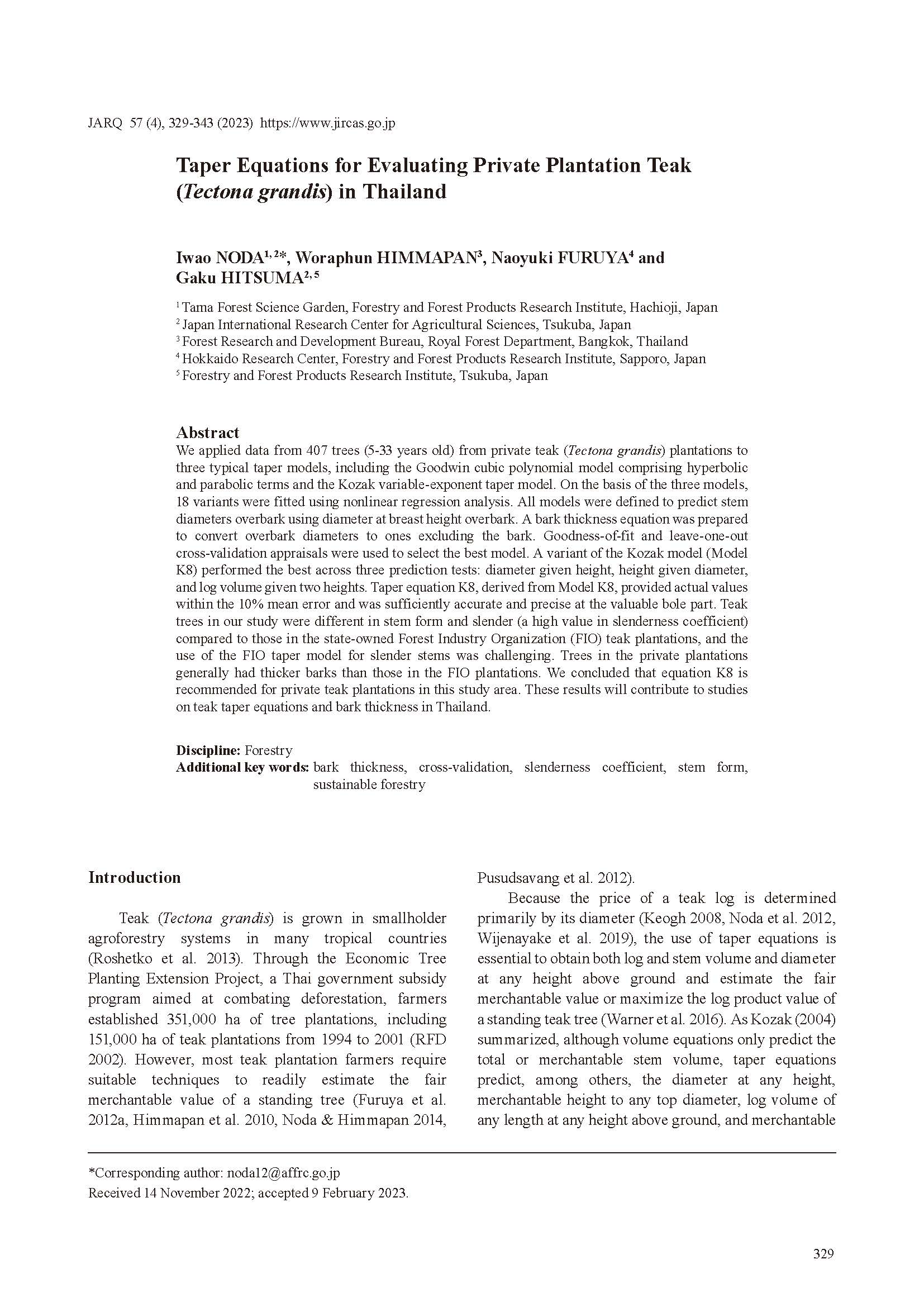Taper Equations for Evaluating Private Plantation Teak (Tectona grandis) in Thailand
JARQ : Japan Agricultural Research Quarterly
| ISSN | 00213551 |
|---|---|
| 書誌レコードID(総合目録DB) | AA0068709X |

本文フルテキスト
jarq57-4_329-343.pdf5.93 MB
We applied data from 407 trees (5-33 years old) from private teak (Tectona grandis) plantations to three typical taper models, including the Goodwin cubic polynomial model comprising hyperbolic and parabolic terms and the Kozak variable-exponent taper model. On the basis of the three models, 18 variants were fitted using nonlinear regression analysis. All models were defined to predict stem diameters overbark using diameter at breast height overbark. A bark thickness equation was prepared to convert overbark diameters to ones excluding the bark. Goodness-of-fit and leave-one-out cross-validation appraisals were used to select the best model. A variant of the Kozak model (Model K8) performed the best across three prediction tests: diameter given height, height given diameter, and log volume given two heights. Taper equation K8, derived from Model K8, provided actual values within the 10% mean error and was sufficiently accurate and precise at the valuable bole part. Teak trees in our study were different in stem form and slender (a high value in slenderness coefficient) compared to those in the state-owned Forest Industry Organization (FIO) teak plantations, and the use of the FIO taper model for slender stems was challenging. Trees in the private plantations generally had thicker barks than those in the FIO plantations. We concluded that equation K8 is recommended for private teak plantations in this study area. These results will contribute to studies on teak taper equations and bark thickness in Thailand.
| 刊行年月日 | |
|---|---|
| 作成者 | Iwao NODA Woraphun HIMMAPAN Naoyuki FURUYA Gaku HITSUMA |
| 著者キーワード | bark thickness cross-validation slenderness coefficient stem form sustainable forestry |
| 公開者 | Japan International Research Center for Agricultural Sciences |
| 受付日 | 2022-11-14 |
| 受理日 | 2023-02-09 |
| オンライン掲載日 | |
| 巻 | 57 |
| 号 | 4 |
| 開始ページ | 329 |
| 終了ページ | 343 |
| DOI | 10.6090/jarq.57.329 |
| 言語 | eng |
